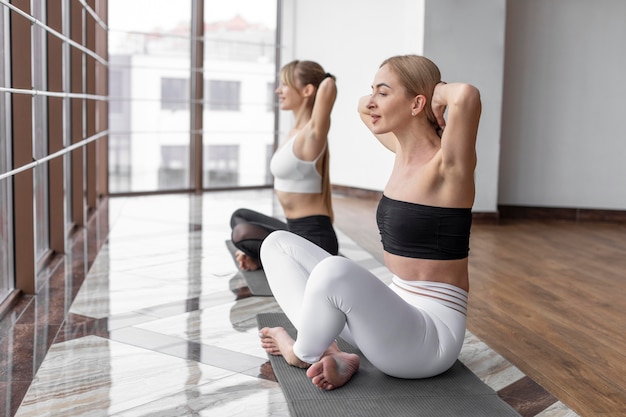
A yoga body isn’t just about flexible limbs. According to Anna Magee, this ancient practice can boost memory, heart, and bone health.
We’ve become quite obsessed with yoga in the UK, spending around £790 million annually on classes and mats. The style of yoga has evolved into many forms, including some eccentric ones like rage yoga, naked yoga, and even dog yoga. Yet, scientific research continues to validate its real benefits. For instance, researchers at UCLA found that a three-month course of yoga and meditation was more effective than memory exercises at reducing age-related brain impairment. Another study showed that yoga could improve sleep quality in breast cancer survivors.
Take Lucy Edge, a former advertising executive. At 53, struggling with deep depression, she chose yoga over antidepressants. After six months in India learning yoga, she returned not only happier but with a newfound sense of contentment. She has since penned three books on yoga and started Yoga Meds on her website, Yogaclicks.com, showcasing over 300 clinical trials on yoga’s benefits for conditions like arthritis, insomnia, and obesity. Driven by her positive experience with yoga, she wanted to share its benefits with others, backed by scientific evidence.
So, how can yoga improve your health, and how can you begin? If crossword puzzles and Sudoku have been your go-to for memory training until now, it might be time to engage in yoga. A UCLA study involving 25 adults over 55 found that yoga and meditation had significant improvements not only in spatial and visual memories but also reduced depression, anxiety, and stress resilience compared to traditional memory exercises.
You don’t have to do hours of yoga either. The study participants practiced one hour of Kundalini yoga per week, which involves breathing techniques, meditation, and some mantra chanting. Additionally, they did a 20-minute daily Kirtan Kriya meditation, involving chanting, hand movements, and visualization.
Yoga isn’t just good for your brain. It is also beneficial for your heart. A 2014 review in the European Journal of Preventive Cardiology found that yoga can lower heart disease risk just as effectively as traditional exercises like brisk walking. Stress, a major contributor to heart disease, can be significantly reduced through yoga, which lowers stress hormones, blood pressure, and heart rate, thus reducing the risk of blood clots.
Yoga has been shown to offer emotional health benefits, too, aiding conditions such as anxiety, stress, and depression, common among those who’ve had a cardiac event or surgery. It can also improve physical metrics like blood pressure, cholesterol levels, and weight, which are all heart disease risk factors.
For beginners, Charlotte Watts, a yoga teacher and nutritional therapist, suggests starting with a series of gentle yoga poses designed to reduce stress. Anna Ashby recommends Restorative yoga, where postures are supported with bolsters and cushions, held for up to 12 minutes, providing a break for the nervous system and fast-track stress relief.
Sarah Shone, a musculoskeletal physiotherapist and yoga teacher, developed yoga classes for back pain relief. Her classes, incorporated into the Primary Care Trust’s rehabilitation program, had an 87% success rate in reducing pain. The National Institute for Health and Care Excellence (NICE) already recommends yoga for lower back pain, and Shone aims to further integrate yoga into clinical practice.
Yoga is also beneficial for maintaining pelvic floor muscles and increasing bone density due to its weight-bearing nature, making it suitable for adapting to various fitness levels and needs.
If you’re just getting started, inform your instructor about any health concerns and choose gentle yoga styles like Hatha or Iyengar to begin with. For specific issues like back pain, consult a doctor to see if you qualify for subsidized yoga classes through an exercise referral scheme.
Investing in the right yoga equipment can enhance your practice. When choosing a yoga mat, consider factors like thickness, weight, and durability, especially if you’ll be carrying it around. There are many options, like Valka Yoga’s eco-friendly Elephant Cork Yoga mat, which is durable, antimicrobial, and provides good joint cushioning. Complementing it with a cork yoga block can aid in stability and grip, making challenging poses more accessible.
Whether you’re new to yoga or experienced, finding the right class is important. Yin or Restorative yoga classes are great for beginners, usually held in a calming environment with support from props. For a more dynamic session, try Vinyasa Flow or Iyengar yoga, which emphasize breath and movement coordination or precise postures. Anusara yoga offers alignment with flowing movements and upbeat music, while Yoga Therapy provides targeted healing for specific injuries or illnesses.
For more information on creating a home retreat, everyday success tips, and personal wellness secrets, you can explore further resources on similar topics.